Louis Comfort Tiffany (1848-1933) was an American artist and designer known for his contributions to the decorative arts, particularly in glassmaking and interior design. Born in New York City in February 1848 to a father who was a successful jewelry manufacturer and his mother Harriet Olivia Avery Young, the daughter of a U.S. Congressman from Connecticut. Louis was the middle child of five. He studied at the National Academy of Design and the École des Beaux-Arts in Paris.
Tiffany’s career took a significant turn in the 1870s when he began to explore the art of glassmaking.
Louis founded Tiffany Studios in 1885 to further his glassmaking interests and to develop his signature style that was characterized by vibrant colors and intricate designs. Tiffany is best known for his windows and lamps, particularly the famous Tiffany lamp that featured layered glass shades adorned with floral and geometric patterns. His most famous innovation came when he first used opalescent and pearlescent glasses.

Throughout his career, Tiffany sought to merge art and functionality, designing everything from jewelry to full-scale interiors. He worked extensively on ecclesiastical projects, creating stunning windows for numerous churches, including Trinity Church in Boston and the Basilica of St. Patrick’s Old Cathedral in New York City.
**
1902
One of Tiffany’s most celebrated windows is the Holy City, (left) – the John Webster Oothout Memorial. The “stairway to heaven” themed creation was installed in the Third Presbyterian Church in Rochester, New York.
John Oothout was the son of Samuel N. Oothout, Rochester’s most successful brewer and maltster. (Maltsters are highly skilled professionals who are critical to the success of the Scotch whisky industry.) For most of his life, John worked as his father’s bookkeeper. He died at age 47 from pneumonia.
**
In addition to his prowess in glass, Louis Tiffany was also a key figure in the American Arts and Crafts Movement, promoting the importance of craftsmanship and artistic integrity. His work was celebrated for its beauty and meticulous attention to detail, earning him numerous accolades, including the Legion of Honor from France.
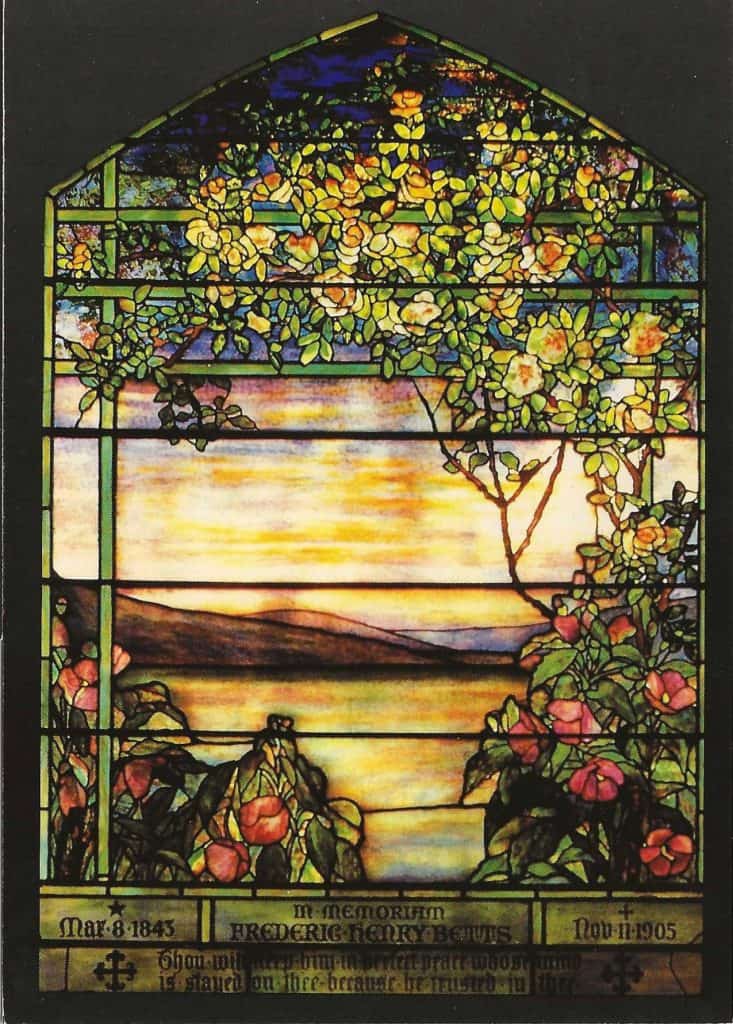
1906
Early in December 1905, Tiffany met with Louise Betts, the widow of Frederic Henry Betts. Betts was a New York lawyer who had been a legal advisor at the J. P. Morgan Company. He died the previous month after an extended illness.
The Betts family was a well establish one that dated back to America’s Revolutionary period. Mr. Betts was a descendant of Connecticut’s Colonial Governor George Wyllys. He graduated from Yale in 1864 and joined the Bar Association after he finished his study of jurisprudence at Columbia in 1866.
Tiffany installed this window in the Saint Andrew’s Dune Church in Southampton, on Long Island, New York. The building that would become the church was built in 1851 as a U.S. Life Saving Service station. What is now the nave once held a surf boat that was launched to aid men and women in distress at sea. After the Civil War when new technology reduced the number of shipwrecks, the government cut funding for the Life Saving Service and most of their stations were torn down. Thankfully, this one was saved in 1879 by five founding Southampton families, Frederic H. Betts among them.
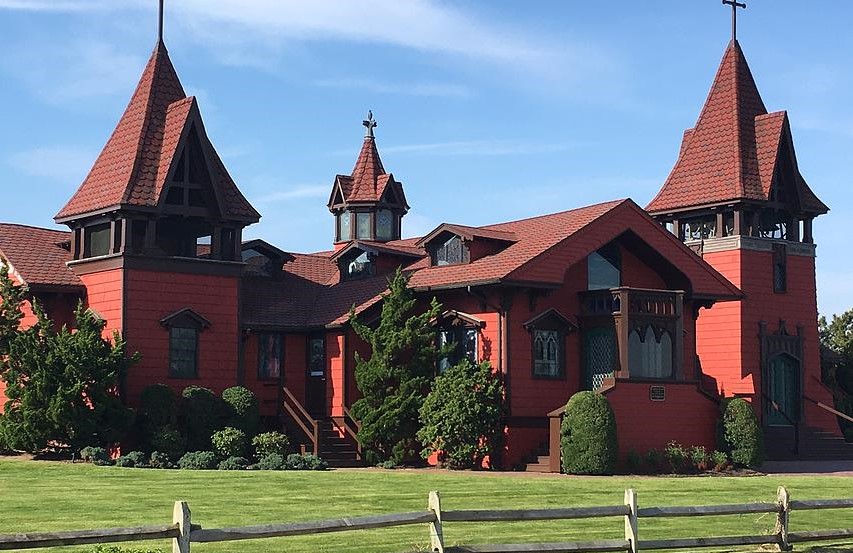
In September 1938 an unnamed storm hit the East Coast. It traveled over Long Island and crashed into Connecticut and Rhode Island killing hundreds of people in its path. It passed directly over this church – photographs of the damage are hanging on the wall just inside the front door. The photographs show that several of the pews and the organ were washed into Lake Agawam across the street and that several stained glass windows were lost, including two of the eleven originals signed by Tiffany himself. For 141 years Saint Andrews has been open for sixteen weeks during the summer season.
**
(Left) 1921 River of Life is a memorial window for Willis L. Ogden. It was installed in the First Presbyterian Church in Brooklyn, New York. Colonel Ogden was a prominent Brooklyn philanthropist. He was the founder of the Ogden Company, a manufacturer of all things woolen. His rank was not honorary; it came from his years in command of the 23rd New York Infantry during the American Civil War.
(Right) 1924 – 1932 The Charles A. Duncan and William G. Hegarth Memorial Windows honor two men who may have known each other or possibly have been friends. These windows were part of a five-window series installed at the Pilgrim Congregational Church in Duluth, Minnesota, between 1918 and 1932. Duncan remains a mystery, however, it is true that Hegarth was a well-known banker at the American Exchange Bank in Duluth, Minnesota, until his death in September 1926.
**
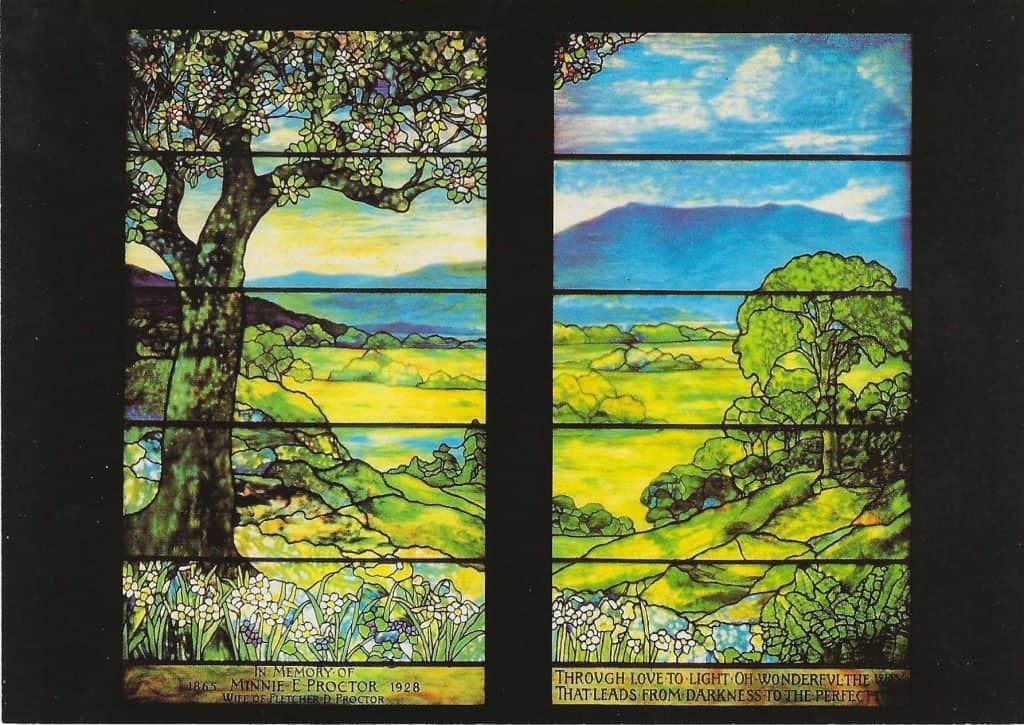
1928 The Minnie E. Proctor Memorial window is a diptych installed in the Union Church of Proctor, Vermont. Minnie Proctor died on July 24, 1928, in a Los Angeles, California, hospital. She was the widow of ex-Vermont Governor Fletcher Proctor who served from 1905 to 1908.
**
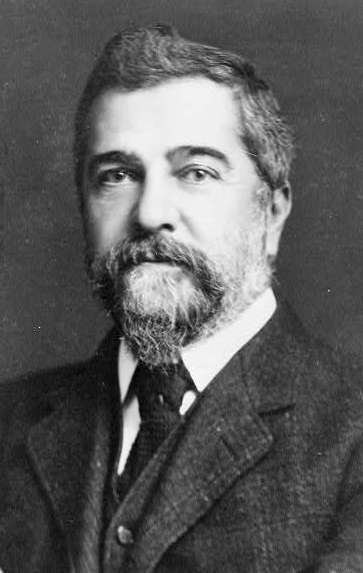
Louis Comfort Tiffany’s legacy endures today. Although his lamps are no longer in vogue, they are still admired by collectors and are often exhibited as examples of the art of glassmaking and interior design. His work is often celebrated in museums; the New-York Historical Society has a prominent collection among their holdings. Tiffany died in 1933, but his name is still recognized internationally, and he is remembered not only as a master craftsman but as a visionary artist.
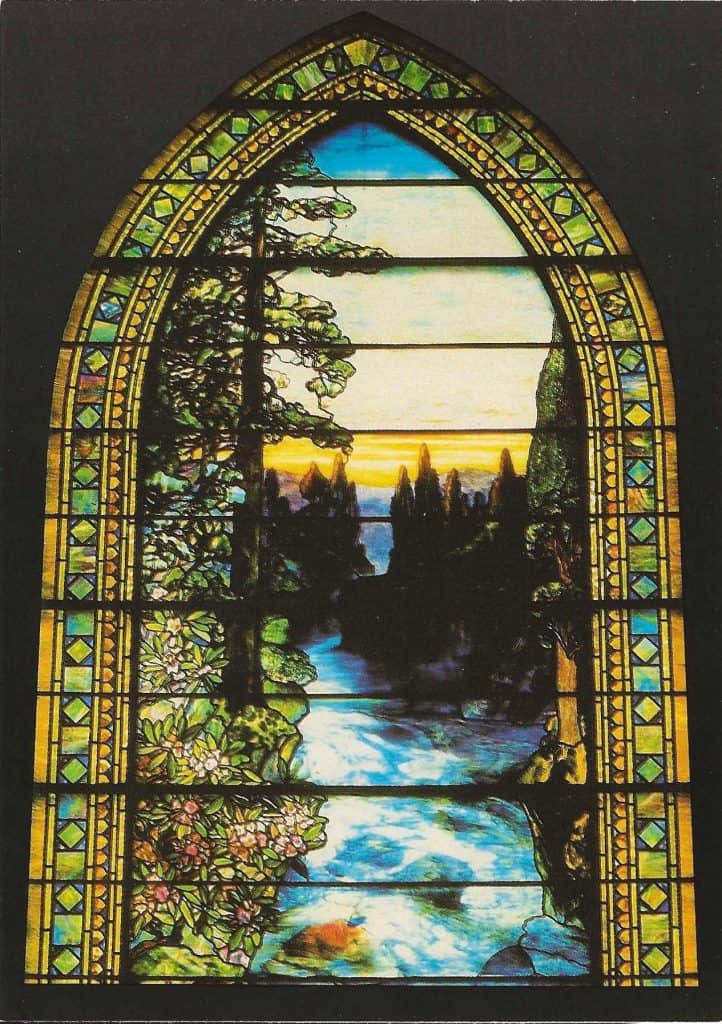
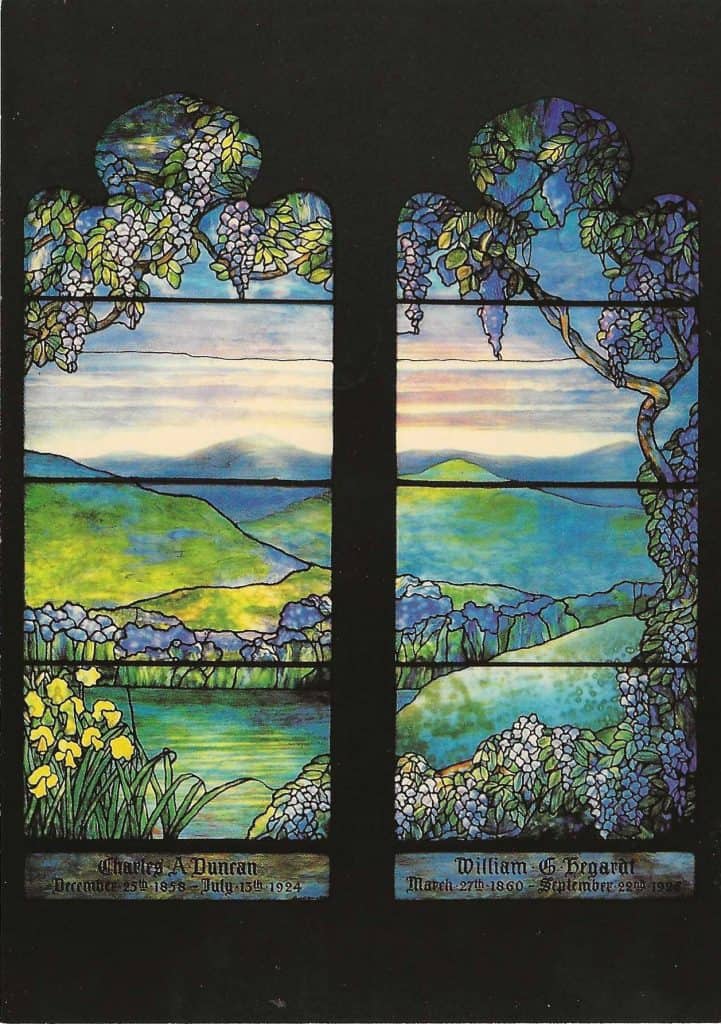
Thanks for this interesting article about Louis Tiffany. His stained-glass designs are beautiful and classic. I have a few postcards with the stained-glass designs.
I’ve been told that my great-aunt had a genuine Tiffany lamp, but got rid of “that old thing”, apparently unaware of its historical value.
Such beautiful windows. Thanks for the article